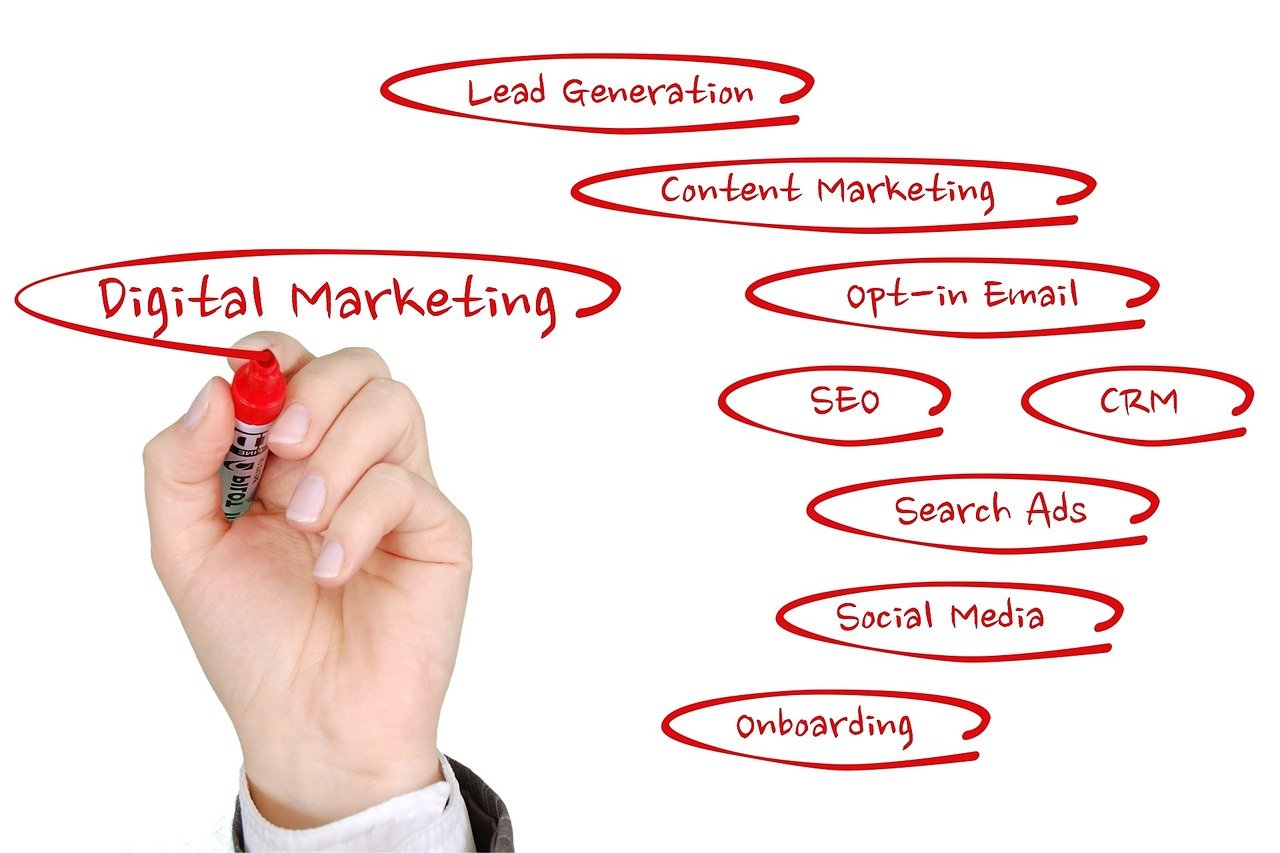
Rise of Artificial Intelligence and Machine Learning
Artificial Intelligence (AI) and Machine Learning (ML) are revolutionizing the digital marketing landscape, offering unprecedented opportunities for businesses to enhance their marketing strategies. These technologies are enabling marketers to create more targeted, efficient, and personalized campaigns than ever before.
Personalization at Scale
AI-driven personalization is transforming how businesses interact with their customers. By analyzing vast amounts of data, AI can deliver highly tailored content, product recommendations, and marketing messages to individual users.
- Examples of AI-driven personalization tools:
- Predictive product recommendations
- Dynamic email content
- Personalized website experiences
- AI-powered chatbots for customer service
- Customized ad targeting
Predictive Analytics
Machine learning algorithms are empowering marketers to forecast consumer behavior and optimize their marketing efforts with unprecedented accuracy.
| Benefits of Predictive Analytics in Digital Marketing |
|---|
| Improved customer segmentation |
| More accurate lead scoring |
| Optimized ad spend |
| Enhanced customer lifetime value predictions |
| Better forecasting of marketing campaign performance |
The Growth of Video Marketing

Video content continues to dominate the digital marketing sphere, with new formats and platforms emerging to captivate audiences. The visual and interactive nature of video makes it an incredibly powerful tool for engaging consumers and conveying brand messages effectively.
Short-Form Videos
The popularity of short-form video content has skyrocketed, driven by platforms like TikTok and Instagram Reels. These bite-sized videos offer a quick and engaging way to capture audience attention in today’s fast-paced digital environment.
Effective short-form video content strategies:
- Create entertaining and informative content in 15-60 seconds
- Leverage trending sounds and challenges
- Showcase products or services in creative ways
- Use captions to increase accessibility and engagement
- Encourage user-generated content through challenges or hashtags
Live Streaming
Live streaming has become a powerful tool for real-time engagement and brand transparency. It allows businesses to connect with their audience in an authentic and immediate manner.
| Live Streaming Platform | Key Features |
|---|---|
| Facebook Live | Large audience reach, interactive comments |
| Instagram Live | Integration with Stories, Q&A feature |
| YouTube Live | Long-form content, monetization options |
| Twitch | Gaming-focused, strong community features |
| LinkedIn Live | Professional audience, B2B focus |
Voice Search Optimization
As voice assistants become increasingly prevalent, optimizing for voice search is crucial for digital marketers. This trend is reshaping SEO strategies and content creation approaches to align with how people naturally speak and ask questions.
Voice-Friendly Content
Creating content that ranks well in voice search requires a different approach compared to traditional SEO.
Tips for optimizing content for voice search:
- Focus on conversational, long-tail keywords
- Create content that answers specific questions
- Optimize for featured snippets
- Improve website loading speed
- Use structured data markup
- Ensure mobile-friendliness
Local SEO for Voice Search
Local businesses stand to benefit significantly from voice search optimization, as many voice queries have local intent.
| Best Practices for Local SEO in Voice Search |
|---|
| Claim and optimize Google My Business listing |
| Ensure NAP (Name, Address, Phone) consistency |
| Encourage and respond to customer reviews |
| Create location-specific content |
| Optimize for “near me” searches |
| Use schema markup for local businesses |
Increased Focus on Data Privacy and Security

As data privacy regulations like GDPR and CCPA reshape the digital landscape, marketers must adapt their practices to prioritize user privacy while still delivering effective campaigns.
Ethical Data Collection
Transparent and ethical data collection practices are becoming essential for building trust with consumers and complying with regulations.
Tools and practices for ensuring data privacy:
- Implementing robust consent management platforms
- Using privacy-by-design principles in marketing technology
- Conducting regular privacy impact assessments
- Offering clear opt-in/opt-out options for data collection
- Implementing data anonymization techniques
- Regular staff training on data privacy best practices
Consumer Trust and Data Security
Building and maintaining consumer trust through robust data security measures is crucial for long-term success in digital marketing.
| Data Security Tool | Key Features |
|---|---|
| Encryption software | Protects data in transit and at rest |
| Two-factor authentication | Adds an extra layer of security for user accounts |
| Virtual Private Networks (VPNs) | Secures internet connections and masks IP addresses |
| Data Loss Prevention (DLP) solutions | Prevents unauthorized sharing of sensitive information |
| Regular security audits | Identifies and addresses potential vulnerabilities |
The Rise of Influencer Marketing
Influencer marketing continues to evolve, with a notable shift towards partnerships with micro and nano influencers for more targeted and authentic engagement.
Micro and Nano Influencers
Working with micro (10,000-100,000 followers) and nano influencers (1,000-10,000 followers) offers benefits such as higher engagement rates and more niche audience targeting.
Platforms and tools for finding and managing influencers:
- AspireIQ
- Upfluence
- Grin
- Traackr
- Klear
- Influencer.co
Authenticity and Engagement
The success of influencer marketing increasingly depends on the authenticity of partnerships and the level of engagement they generate.
| Metric | Description |
|---|---|
| Engagement Rate | Likes, comments, and shares relative to follower count |
| Reach | Number of unique users who saw the influencer’s content |
| Conversions | Direct sales or sign-ups attributed to the influencer |
| Brand Sentiment | Change in audience perception of the brand |
| Content Quality | Alignment with brand values and aesthetic |
Leveraging Augmented Reality (AR) and Virtual Reality (VR)

AR and VR technologies are creating immersive marketing experiences that engage consumers in innovative ways, blurring the lines between digital and physical realities.
AR in E-Commerce
Augmented Reality is transforming the online shopping experience by allowing customers to visualize products in their own environment before making a purchase.
Examples of AR applications in e-commerce:
- Virtual try-on for clothing and accessories
- Furniture placement visualization in home spaces
- Makeup and hair color testing
- Car customization and virtual test drives
- Interactive product packaging experiences
VR for Brand Experiences
Virtual Reality offers brands the opportunity to create fully immersive experiences that transport customers into unique brand worlds.
| Feature | AR | VR |
|---|---|---|
| Immersion Level | Partial | Full |
| Hardware Requirements | Smartphone or tablet | VR headset |
| Real-World Integration | High | Low |
| Application in Marketing | Product visualization, interactive ads | Virtual stores, immersive brand experiences |
| Cost of Implementation | Lower | Higher |
Sustainable and Ethical Marketing
Consumers are increasingly favoring brands that demonstrate a commitment to social responsibility and sustainability, making these factors crucial elements of modern marketing strategies.
Green Marketing Strategies
Implementing eco-friendly marketing practices not only benefits the environment but also resonates with environmentally conscious consumers.
Examples of brands excelling in green marketing:
- Patagonia (sustainable outdoor clothing)
- LUSH Cosmetics (packaging-free products)
- Seventh Generation (eco-friendly household products)
- Tesla (electric vehicles and renewable energy)
- Reformation (sustainable fashion)
Social Responsibility Campaigns
Incorporating social responsibility into marketing efforts can significantly impact brand perception and consumer loyalty.
| Impact of Social Responsibility | Effect on Brand |
|---|---|
| Increased Consumer Trust | Builds emotional connection with customers |
| Enhanced Brand Loyalty | Customers are more likely to stay with socially responsible brands |
| Positive Brand Image | Improves overall perception of the brand |
| Competitive Advantage | Sets the brand apart in crowded markets |
| Employee Satisfaction | Attracts and retains talented employees |
Conclusion
As we look ahead to 2024, the digital marketing landscape continues to evolve at a rapid pace. Staying ahead of these trends is crucial for businesses looking to maintain a competitive edge in the digital realm.
Key trends to watch and actionable steps for marketers:
- Embrace AI and ML for personalization and predictive analytics
- Invest in video marketing, especially short-form and live content
- Optimize for voice search, focusing on conversational content
- Prioritize data privacy and security in all marketing efforts
- Leverage micro and nano influencers for authentic engagement
- Explore AR and VR technologies for immersive brand experiences
- Incorporate sustainability and social responsibility into marketing strategies
By staying informed and adaptable, marketers can harness these trends to create more effective, engaging, and responsible digital marketing campaigns in the years to come.